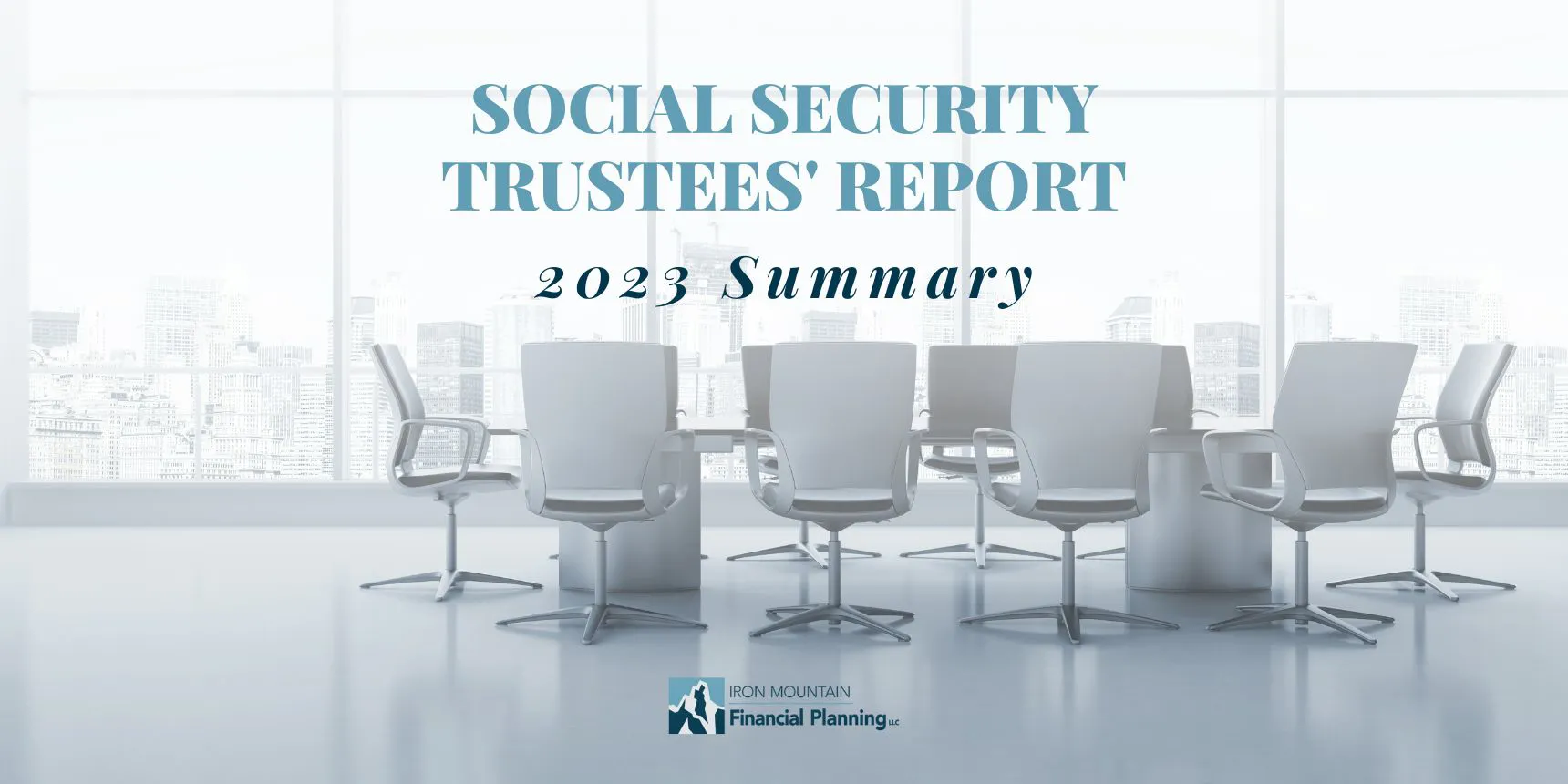The Social Security Board of Trustees released their annual report in March of this year, considerably earlier than previous years. The report covering 2023 operations spans 276 pages that go into detail about the current financial status, future assumptions, and projections.
As in previous years, this most recent report continues the trend that the Social Security program faces long term funding shortages that will need to be addressed sooner or later.
The Social Security program is technically defined as Old Age Survivors and Disability Income (OASDI). This is split between the Old Age and Survivors Insurance program (OASI aka Retirement Benefits) and the Disability Insurance program (DI).
The Retirement Benefits Trust Fund and the Disability Insurance Trust Fund are legally two separate entities and I will focus the remainder of this article on the Retirement Benefits side of the ledger.
No Significant Change from Last year
The OASI Trust fund is projected to be depleted in 2033, one year later than reported last year. At that time, the taxes collected would be enough to pay 77 percent of expected benefits; AND the Trust Fund would be exhausted. All beneficiaries would face a 23 percent reduction in benefits, 10 years from now.
As all of you are aware, 10 years passes in a blink of an eye. This year’s report doesn’t include specific options to address the shortfall as they have provided in previous years. The Trustees state the following in place of specific recommendations:
“The 2023 Trustees Reports indicate a need for substantial changes to address Social Security’s and Medicare’s financial challenges. The Trustees recommend that lawmakers address the projected trust fund shortfalls in a timely way in order to phase in necessary changes gradually and give workers and beneficiaries time to adjust their expectations and behavior. Implementing changes sooner rather than later would allow more generations to share in the needed revenue increases or reductions in scheduled benefits. With informed discussion, creative thinking, and timely legislative action, Social Security and Medicare can continue to protect future generations.”
Same Amount of Options
While lawmakers have a broad list of options that could close the Social Security long-term financing shortfall, another consideration is allowing time for the changes to be implemented. Delays to implementing needed changes limits available time to gradually phase in changes and give today’s workers less time to plan for changes in benefits or taxes. If nothing else, this year’s report serves as an important reminder that the Social Security program’s funding shortfall needs to be addressed sooner than later.
If you find yourself wanting to feel more confident about how Social Security retirement benefits fit into the puzzle of your retirement planning – it’s what I do for a living. Click here to schedule a Learn More call.
Here’s a link to the 2023 Press Release: https://www.ssa.gov/news/press/releases/2023/#3-2023-3
Some interesting highlights from the report include:
- Once again, projections in the 2023 report do reflect the potential residual effects of the COVID-19 pandemic primarily in the form of increased inflation expectations over the next 10 years.
- An estimated 179.3 million people had earnings covered by Social Security and paid payroll taxes which contributed to the total income of $942.8 billion including the interest from the OASI trust fund and taxation of benefits.
- An estimated 57 million retired workers and survivors received retirement benefits at a total cost of $1,097.5 billion including $1,088.1 billion in benefits paid, $4.0 billion in administrative costs and $5.3 billion to the Railroad Retirement financial interchange.
- While the OASI trust fund reserves where at $2,752 billion at the start of 2022, they ended at $2,711 billion for a net loss of $41 billion – a trend expected to only accelerate from here forward.
- The expected depletion of the OASI trust fund in 2033 is one year earlier than previous year’s estimates.






